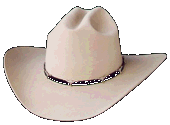"The Magic Weed examines the origins of the plant in China, its part in medicine, clothing, war and feed stock, as well as its recreational and spiritual usage. It follows the cannabis trail across time and continents exposing the conspiracy behind the banning of hemp and cannabis production in America during the 1920s."
"A public misconception that Mexicans and other minorities committed violent crimes while under the influence of marijuana, which caused many states to criminalize marijuana, was promoted by Harry J. Anslinger's media interviews, faulty studies, and propaganda films that claimed marijuana caused violent, erratic, and overly sexual behavior.
"In the 1930s, marijuana was targeted on a federal level with the passage of the Uniform State Narcotic Act, the 1937 Marihuana Tax Act, and the creation of the Federal Bureau of Narcotics. DuPont and William Randolph Hearst played a role in the criminalization of marijuana, as hemp was threatening their company's respective products.
"In the 1950s, strict mandatory sentencing laws substantially increased federal penalties for marijuana possession, but were removed in the 1970s. However, in the 1980s, mandatory sentencing laws where reinstated for large-scale marijuana distribution, three strikes laws were enacted and applied to marijuana possession, and the death sentence was enabled for marijuana drug kingpins."
"Cannabis was also known to the Assyrians, who discovered its psychoactive properties through the Aryans. Using it in some religious ceremonies, they called it qunubu or the drug for sadness. Cannabis was also introduced by the Aryans to the Scythians and Thracians/Dacians, whose shamans (the kapnobatai - "those who walk on smoke/clouds") burned cannabis flowers to induce a state of trance. Members of the cult of Dionysus, believed to have originated in Thrace, are also thought to have inhaled cannabis smoke.
"Cannabis has an ancient history of ritual use and is found in pharmacological cults around the world. Hemp seeds discovered by archaeologists at Pazyryk suggest early ceremonial practices by the Scythians occurred during the 5th to 2nd century BCE, confirming previous historical reports by Herodotus. Some historians and etymologists have claimed that cannabis was used as a religious sacrament by ancient Jews, early Christians and Muslims of the Sufi order."












No comments:
Post a Comment